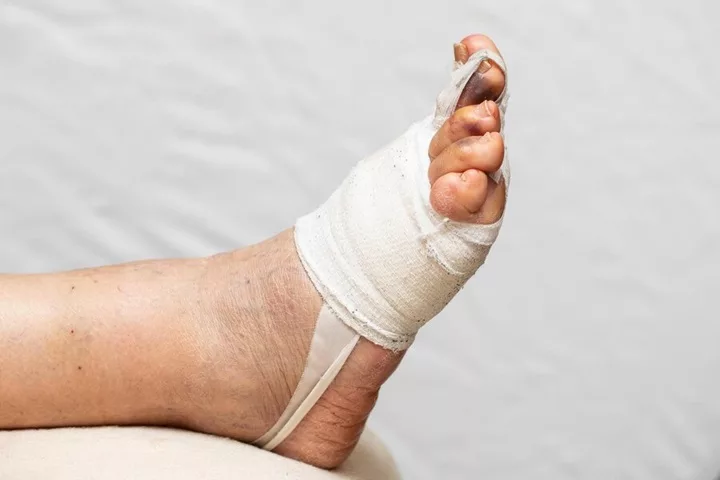What Is a Puncture Wound?
A puncture wound is not the same as a cut. What differentiates it is the small entry point made by a pointed object, like stepping on a nail, as opposed to the larger, more open tear that defines a cut. The care for puncture wounds diverges from that for cuts because their narrow entrance can obscure a deeper or more severe internal injury.
These types of wounds commonly occur on the foot, a frequent incident, particularly in warmer seasons when barefoot walks become more routine. Despite their commonality, they are frequently not given the necessary attention. Neglected puncture wounds can lead to infections or other complications.
Immediate treatment within the first 24-hour window is critical for puncture wounds; dangers include the embedded object remaining under the skin. Timely professional medical attention has been proven to avert complications.
Foreign Bodies and Puncture Wounds
Foreign objects such as nails, glass shards, toothpicks, sewing or insulin needles, and seashell fragments can become lodged in a puncture wound. Materials from your own body, like skin, or from clothing and footwear can also be driven into the wound, along with the initial penetrating object’s dirt and debris, making all puncture wounds inherently contaminated due to their non-sterile nature. Any retained foreign material in the wound heightens the risk of future complications.
Assessing the Severity of Puncture Wounds
Evaluating the severity of a puncture wound can be done in different ways. One significant aspect is the depth of the wound – the deeper the puncture, the higher the risk for problems like infections to develop. Judging the extent of penetration into the foot might be beyond a patient’s assessment, hence the importance of seeking medical treatment promptly after the injury.
The size, shape, and cleanliness of the object that caused the wound also contribute to its severity. Bigger and longer objects are capable of reaching deeper tissues and potentially causing increased damage. Objects with more accumulated grime, such as rusty nails, carry more debris into the wound, which increases the chances of infection.
The presence of socks and shoes at the time of injury may mean that remnants of these items can become trapped in the wound, thus affecting its severity.
Treatment Protocols
Proper cleaning and attentive care throughout the healing trajectory are vital to preventing post-injury complications of a puncture wound.
After receiving initial treatment, which might include a trip to the emergency room, it is advisable to consult a foot and ankle surgeon. This visit should ideally occur within 24 hours post-injury for a comprehensive cleaning and attentive follow-up.
The surgeon will ensure no foreign bodies are left in the wound after a thorough cleaning. They might administer a local anesthetic, clean the wound meticulously, and oversee the healing progress. X-rays may be requested to confirm the absence of any retained objects or to diagnose potential bone damage. Antibiotics could be prescribed if deemed necessary.
Avoiding Further Issues
To stave off complications, follow the foot and ankle surgeon’s wound care directions.
Infections are typical complications that can yield severe outcomes. Note the following signs indicative of infection:
- Initial signs of minor infection such as tenderness, redness, discharge, swelling, warmth, or fever may arise two to five days after the injury.
- If these symptoms do not improve, or if they resurface after 10 to 14 days. A serious bone or joint infection might develop.
Inadequate treatment could also cause painful scar tissue at the wound site. Or the formation of a cyst where the foreign body remains embedded.
To prevent serious consequences, taking prompt and appropriate action is essential.
Immediate Actions for Puncture Wounds
- Seek professional medical help without delay.
- Update tetanus immunizations if needed (typically every 10 years).
- Consult a foot and ankle surgeon within a day of sustaining the injury.
- Adhere strictly to your doctor’s healing regimen.
- Keep the wound dressing moisture-free.
- Refrain from putting weight on the affected foot.
- Complete any course of antibiotics if they are prescribed.
- Regularly check your temperature and be on alert for symptoms of infection like pain. Redness, or fever, and contact your healthcare provider if they emerge.




